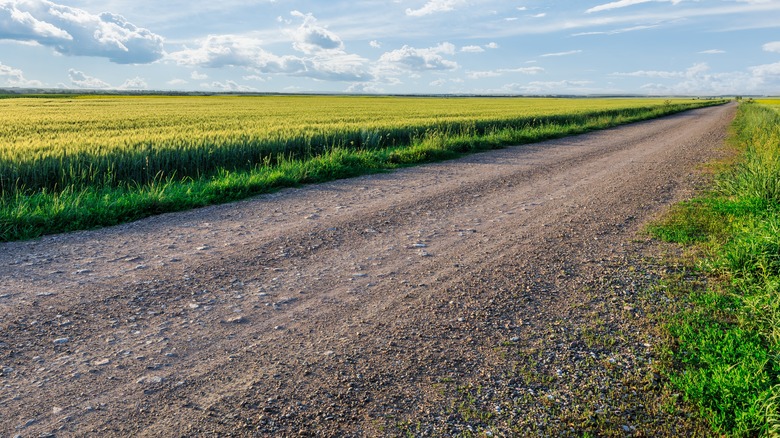
Jordan Siemens/Getty Images
A lot goes into ensuring the safety of yourself and others while on the road. Not only do you have to keep track of your car’s maintenance schedule to make sure it’s running at its best, but you also have to be aware of other motorists and their actions. On top of that, you also have to pay attention to your surroundings, pedestrians, weather conditions, and the condition of the road itself. While most vehicles have an easier time driving safely on designated roadways than other surfaces, not all roads are created equal.
Advertisement
If you’ve spent any amount of time on highways, side streets, driveways, and the like, you’re likely aware different roads mean different things. Chiefly, each type of road provide different levels of traction for your tires. Compared to the environment and public health-harming asphalt and, to a lesser extent, dirt roads, those made of gravel are the most tedious to navigate in this regard. Since they’re made of loose stone, these roadways are prone to shifting when driving over them, which can lead a car, motorcycle, or bicycle to struggle with getting a firm handle on them.
If you’re nervous about driving on gravel roads, knowing just how unpredictable they can be, fret not. Adding onto the essential tips every car owner should know, there are some more that can specifically make driving over these roadways a bit less stress-inducing.
Advertisement
How to navigate gravel roads as safely as possible

ABCDstock/Shutterstock
Even if it’s just on a long driveway or a brief excursion down a side street, driving on gravel can be tricky. It’s bumpy, unpredictable, and can make it feel as though your wheels are about to fall off. If the gravel is wet, it becomes even more stressful to drive straight on, let alone take tight turns on. Thankfully, there are a few things you can do to mitigate the worry that comes with driving down such an unpredictable, near-traction-free roadway type.
Advertisement
First and foremost is to be aware of your speed. You want to keep that speedometer low, as increasing speed reduces what little traction is already present with gravel. If there are existing tracks, it’s wise to drive within those and steer wisely. Don’t keep too tight a grip on the wheel or make sudden movements. Steer smoothly and keep both hands loosely on the wheel, allowing the car to work in tandem with the road’s grooves. In the event you skid, don’t panic. Lift your foot from the gas and brakes and carefully turn in the direction the car is sliding. You should regain control shortly.
While they may be designed for vehicles, roads can work against them in some instances. Given their lack of traction compared to other road surfaces, gravel roads in particular can make for some scares behind the wheel. So long as you keep in mind the tips for driving over such roads, you should be just fine in doing so.
Advertisement